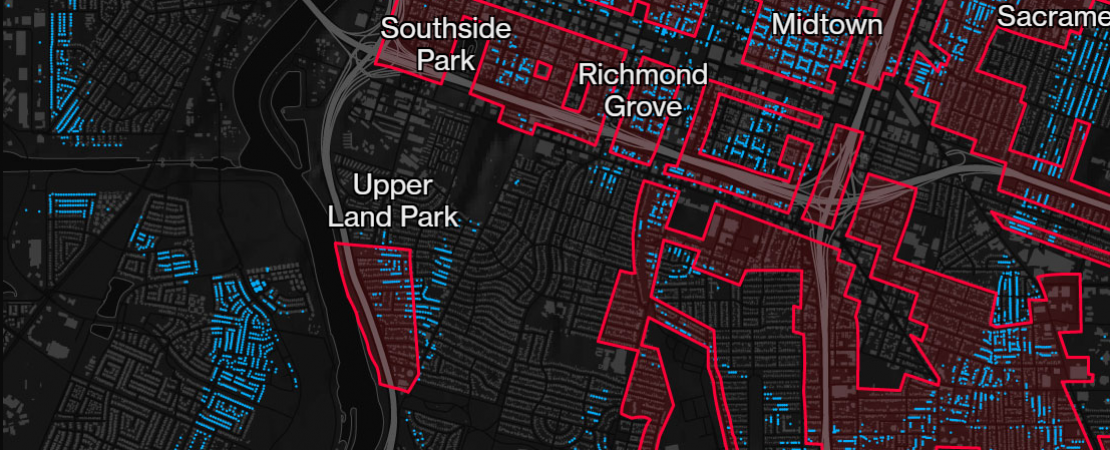
Flooding is a rising threat across the U.S., with homeowners facing as much as $19 billion in damages every year. What puts a neighborhood at high risk for flooding? Geography is key, but new data reveal another factor that can be determinative, too: race.
Contemporary maps for flood risk overlap in striking ways with New Deal–era maps used by the federal government to assess risk for mortgage lending. When appraisers mapped cities for the federal Homeowners’ Loan Corporation in the 1930s, they assigned grades to neighborhoods based on several factors, race high among them. Black and immigrant neighborhoods were deemed undesirable, marked by yellow or red lines designating these areas “declining” or “hazardous”—a racist practice known as redlining.
These historically redlined neighborhoods suffer a far higher risk of flooding today, according to new research from Redfin, the Seattle-based real-estate brokerage.
Using flood risk data from the nonprofit First Street Foundation and redlining maps from the University of Richmond’s Mapping Inequality project, Redfin assessed racial disparities in flood risk across dozens of major metro areas.
Consider Sacramento. The California capital region, with a population of more than 2 million, had the highest racial flood risk disparity in Redfin’s analysis.